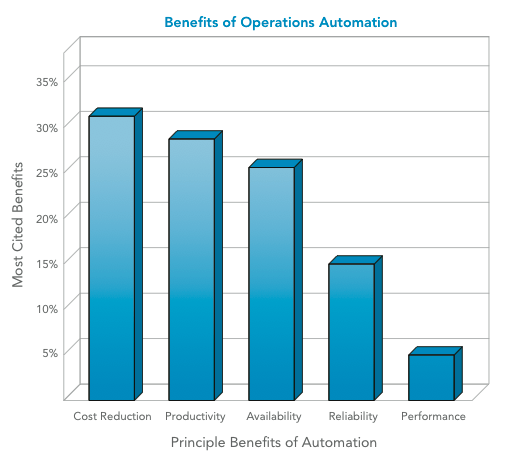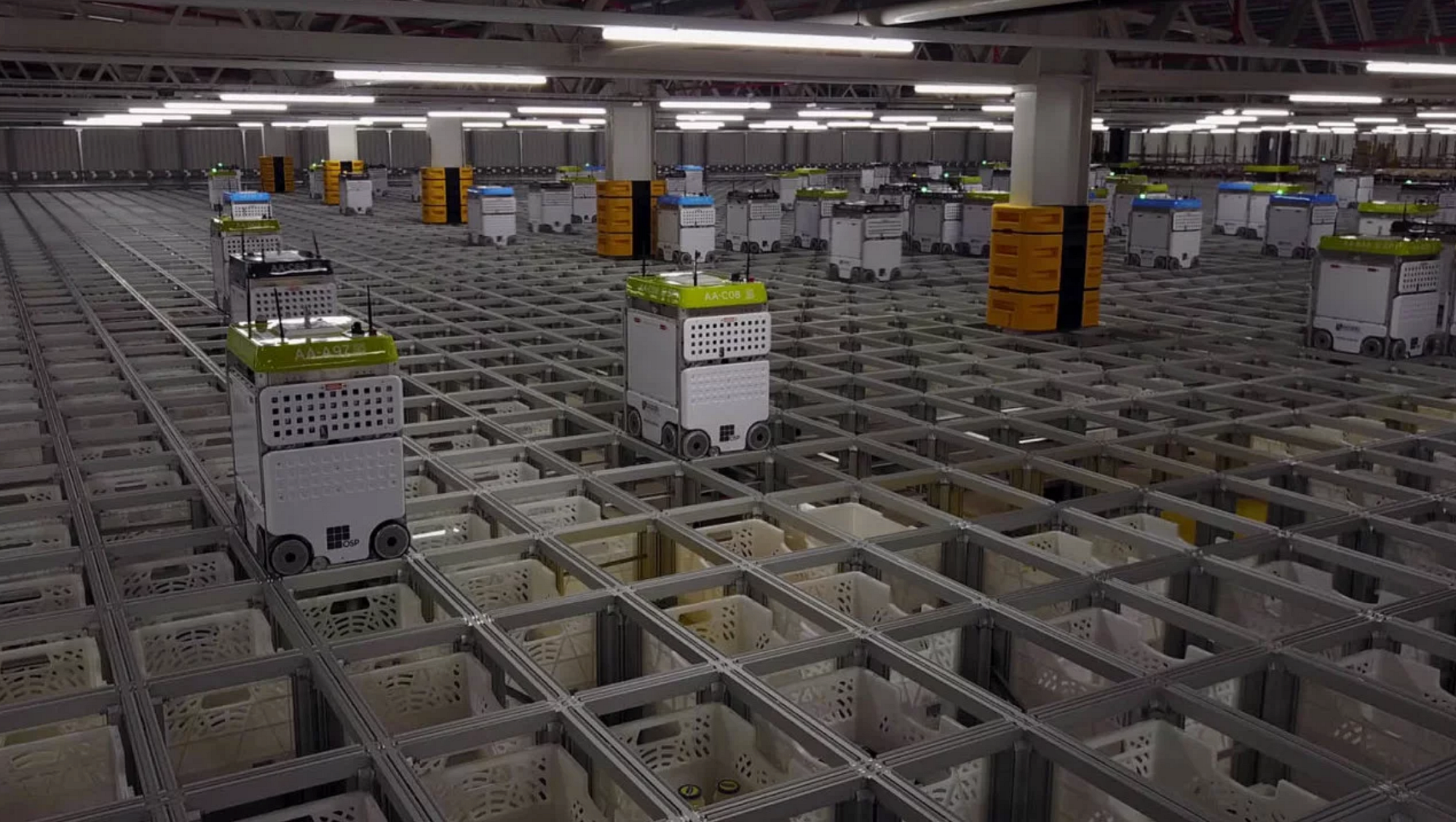People dreamed of robotised world long before the term automation was coined. Elektro, the first ever robot was designed and built by Westinghouse Electric Corporation in Ohio between 1937 and 1938. A seven feet tall (over 2m), weighting more than 250 pounds machine could walk, smoke cigarettes, blow up balloons, move his arms and head, and speak about 700 words using the 78-rpm record player embedded in his massive chest. That’s not enough to compete in a trivia competition with humans, but it is impressive considering the year of construction. Unfortunately, Electro and his kind were nothing more than demonstrations of a metal remotely controlled by human operators.
Now look at the latest movies documenting Altas — the creature of Boston Dynamics — walking, jumping, falling and standing up again by itself — and see how far we’ve come in these 90 years.
Detached Visions Of Robotic Functions
Surprisingly, the term automation, inspired by the earlier word automatic, was not widely used before 1947, when Ford established an automation department. It was during this time that industry was rapidly adopting feedback PID controllers, which were introduced in the 1930s. By the early 60′, first computers were introduced, initiating automation at the wider scale.
In commercial movies and promotional materials, these “electronic brains” didn’t reflect what the robots really were. Instead, they just hummed away in orderly surroundings, supervised by well-dressed individuals who seemed to have nothing to do except checking sporadically if a reel of tape needs to be changed.
In reality, most machine room supervisors would trade their last box of punch cards for a self-guided “Electro” who could unfailingly schedule and manage jobs, deal with unexpected events, and resolve performance problems. Although our fear of change and unknown remains unchanged, the same is true today — humans build intelligent machines to ease their jobs — and that’s where automated operations comes in.
Operations Management
In a computing environment, the variety of software needed to perform essential functions has always posed a challenging operations management problems. Initial solutions relied on numerous human operators, whose salaries were eating a huge chunk of the IT budget.
In fact, as the market demanded more and more increased productivity, operations became a monster that had to be constantly fed. Whole administrative structures were created to support it. Bureaucracy, and the nature of people, led to a system that was prone to errors — further resulting in more expense and complexity. Soon, the situation was out of control and something had to be done. The answer turned out to be using the computer to control and manage itself.
Humble Beginnings of Automated Operations
Automated computer operations began about 50 years ago when IBM introduced the OS/360 operating system. Like other early operating systems, OS/360 was a supervisory program that managed system resources and provided automatic transition from one job to another. This was called batch processing. OS/360 could run batch jobs, but had only limited control over their sequence and no capability to schedule future jobs. It still required a high level of operator involvement.Subsequently, IBM developed add-on components like Job Entry System 3 (JES3) that provided basic job scheduling. But, this capability remained weak throughout later editions IBM operating systems such as MVS, VM, and DOS/VE.
The issues surrounding automating computer operations lie in the complexity of the various operating systems, databases, communications, and other software in use. They had to be manually integrated and controlled by the operations staff because each component was independent.
The continuing need for people to perform complex, labour-intensive tasks led software developers to begin developing what’s called today automated operations software. The number and breadth of products has grown considerably to encompass scheduling, management of console messages, backup and recovery, printing services, performance tuning, and more.
Top 5 Automation Benefits For The Organisations
Given the right tools and smart workflow analysis, automating computer operations can be surprisingly easy and can reap major benefits. Understanding these benefits — which obviously may come with some obstacles — will help you develop support for an operations automation project.
A recent study by a leading trade journal asked the question, “What do you see as the most important benefits of an automated or unattended computer centre?”, for which the primary benefits of operations automation cited most often were cost reduction, productivity, availability, reliability, and performance (see the figure below).

The Reasons Behind Implementing Automation
Every business faces global pressure to increase their profitability. The ideal approach is to reduce costs while increasing effectiveness. Thanks to the benefits that automation software presents, it’s now possible to achieve both. The greatest opportunity is to increase service to the customer (end user) while systematically reducing costs. Management often overlooks this potential for savings. Most modern servers have a low operating cost and the total cost of ownership has been declining. Even so, the cost of the operations staff can be as high as 71% of the total cost.
Productivity
As an organisation’s technology demands growth, productivity becomes a big concern. Typically, as other business areas were given tools to increase their productivity and effectiveness, IT operations took a back seat. The proliferation of desktop productivity software has created substantial gains in the office and HR environments. But, instead of alleviating workload for the IT professionals in the back room, the spread of PCs meant more tasks to be accomplished.
As people use computers more, they place greater demands on what they can achieve. More users are generating more jobs, and printed output has increased despite efforts to reduce printed reports. In spite of the trend to online transaction-oriented and client/server systems, batch workloads continue to grow. Production batch jobs still consume the majority of CPU time, and in large manufacturing centres, jobs are constantly being added.
Job scheduling software increases batch throughput by automating the production batch schedule. In the early days, computer throughput was limited by how fast operators could reset switches on the console. Today’s solutions is not to allow the computer to remain idle while waiting for the operator to release the next job. You save time and money by eliminating the lag time between jobs and minimising operator intervention. In some instances, you can trim hours off your process, which lets you process more work and significantly improve system use.
Once the job schedule is established, the automation software executes the commands precisely and in the correct sequence, eliminating operator errors. Forecasting job completion and being able to perform “what if” analyses of schedule changes benefits operations by removing much of the guesswork from daily tasks.
Reliability
Productivity is an obvious benefit of automation. However, reliability is the main concern when it comes to increased production. It is the cornerstone of any good IT operations department and without it you have confusion, chaos, and unhappy users.
IT operations requires two opposed skill sets: On one hand, an operations person needs highly technical skills, such as the ability to understand the complexities of an operating system and to analyse and solve problems as they arise. On the other hand, this same person has to be content pushing buttons and loading paper.
Let’s be honest, off-shift operations include some of the most boring, repetitive, and error-prone tasks of an IT organisation. But, when you remove the human factor, you eliminate most batch processing errors.
Automated operations ensure that jobs are not forgotten or run out of sequence, that prerequisite jobs are completed successfully, that the input data is correct, and that any special processing is performed.
All these types of errors already occur in single-location organisations. Now, consider that most of the corporations consist of a network of multiple systems, geographically dispersed that include multiple operating systems, communications issues, integrated local area network processing, and attached PCs. The chance for errors rises exponentially. The only way to make this type of environment work is automated operations.
Software doesn’t make human errors, it handle complex tasks dynamically and intelligently, based on predefined parameters. Yet, critical company functions such as releasing jobs, performing backups, and ensuring communications, are normally performed by entry-level individuals within the IT organisation. The benefit of an automated system is that these functions are reliably executed by the automation software, relieving operations personnel from hours of tedious, boring and manual tasks.
Availability
Companies are continually more reliant on their computers and access to the Internet. Day-to-day business is routinely conducted with online systems: order entry, reservations, handling returns, customer service, assembly instructions, claims, shipping orders — the list goes on. If the computer is not available, the business suffers.
Years ago, it was considered acceptable to have the computer unavailable for a few hours. Today, with operations almost entirely moved to cloud computing, the outage of key systems can cost millions of dollars in lost revenue and tarnish a company’s reputation.
High availability is clearly one of IT management’s primary goals. Here too, automated operations can help. A disk drive may crash, but the situation becomes serious when there is not an adequate backup. A key advantage to automation is the ability to automate your save and recovery systems to ensure protection from the potential disaster of disk loss, or inadvertent damage to system objects from human error.
Centralised management also makes sense in a networked environment. Remote resources can solve business issues while a single operator at a central console observes critical functions throughout the network. Continuous monitoring with a low CPU and communications overhead makes it easier to spot vital network performance trends.
Performance

Every company would like to have their enterprise perform smoothly and without unexpected complications. In reality, it is more likely to be overburdened with work. Even though advancements in computers make them faster and less expensive every year, the demands on them always catch up and eventually exceed the level of capability that a company’s computer infrastructure possesses. That leaves a lot of companies wanting to improve their system performance.
Two options to improve performance are to upgrade hardware or purchase a newer system — both expensive choices. An alternative is to tune a system for better performance, but this takes a highly skilled person who is not normally available 24 hours a day. And, once a system is tuned for a specific workload, if the workload changes, the settings are no longer optimum.
Obstacles to Achieving Automated Operations
Operations automation results in higher productivity, reliability, availability, and increased performance and can reduce operating costs. Moving to lights-out operations yields a good return on investment.
The benefits of automated systems can be a powerful premise for increasing service to the end users of your organisation. However, as with everything involving change — it’s not an easy task. There are many pitfalls and many obstacles to overcome — human factor being the most prominent one.
People always find excuses not to do something. A recent survey of IT operators asked why they hadn’t automated their systems. Answers ranged from the expected to the uninformed. The common answers were no money, no time, or no staff. Some sample responses:
- “We do not have the budget and are not familiar with the automation options available in the market.”
- “Too little time and numerous issues that we would need to address.”
- “Not necessary — I am in the process of writing my own code.”
Of the companies surveyed, 43% have identified and placed operations automation projects on their calendar. That means that 57% of these companies have not recognised the potential advantages of automation.
Cost
Generally speaking, the obstacles to operation automation fall into two categories: people and cost. Two of the most common benefits are availability and reliability. Both of these factors are convincing arguments to proceed with automation projects, and normally supersede the need to cost-justify them. However, people are almost never driven by purely logical arguments and same applies to highly complex organisations. Also, as projects advance, additional cost factors come into play. Additional investment in things such as automated hardware tools, additional software, and messaging services may be required.
The companies that implement automated systems early often see positive bottom line results from their efforts. However, cost savings are not the primary reason to automate computer operations. As the quality of this service improves with automation software, the costs associated with it also improve. The focus should be on improving; service to the end users, and employees’ satisfaction from job performance.
In-house automation solutions are often successful at first, but the scope is usually too narrow. Systems often fail because of the maintenance and enhancements required to maintain and expand the automation process. And, in-house automation solutions are expensive and, not by being a core service, they are typically a low priority in the IT department. This is why most internally developed automation efforts stall after achieving limited success. Many companies that have gone down this path eventually turn to off-the-shelf automation software.
People
Lots have been said about robotics-human relationship. Many system operators view automation as a direct threat to their livelihood. Not having a strategy for handling staff concerns and managing staff participation is one of the easiest ways to fail at implementing automation and one, that could be simply avoided if you planned for it in advance. Computer operators who feel their jobs are in jeopardy can always find ways to defeat the testing, evaluation, and implementation of new automation software. Plus, operation supervisors see staff reduction as a direct threat to their position and status.
No company wants to have a reputation for firing employees, or to have an environment of low morale and trepidation. However, market imposes constant changes making attrition alone not a viable solution. To make sure that human-robot relationship is a healthy one, companies need to modify the role of the computer operator. By giving your operations personnel new responsibilities, such as operations analyst, networking technician, or PC administrator, you’re helping to maximise talent and creativity.
Summing up
From management’s perspective, availability, productivity, reliability, performance, and cost reduction are powerful arguments for adopting an operations automation solution. In order to overcome obstacles and achieve these benefits companies require a buy in from people of all hierarchy levels. As long as you understand, anticipate, and balance these obstacles against the potential benefits of automation, they should not interrupt your plans.
— -
At Untrite, we provide smart RPA solutions for high growth companies. We are very excited about the new projects we are taking on helping our clients’ employees focus on productivity — not processing. Follow our next steps by subscribing to our newsletter or get in touch by emailing me directly at kamila@untrite.com.



